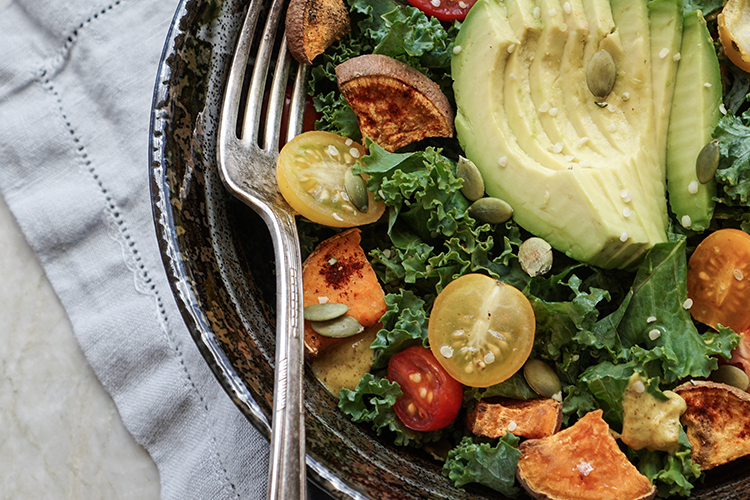Blog
What is clean eating?
 What is clean eating, and should be concerned about this as a dietary trend?
What is clean eating, and should be concerned about this as a dietary trend?
Clean eating is highly on trend at the moment. And it has come with its fair share of skepticism, as your everyday folk turn their lives from the brink by adopting healthy eating habits or models-turned-chefs suddenly become nutritional experts.
The idea of clean eating is perpetuated through social media and it’s very glamorous, heavily edited smoke screen.
But once we sift through what and whom we want to connect with, isn’t the push for wellness a good thing? Surely it is better than cigarettes, drugs and daily 800-calorie limit of years gone by?
It certainly can be. As long as eating well isn’t taken to the extreme, focusing on the exclusion of many foods, possibly squashing the enjoyment food brings and perpetuating a negative relationship with food.
What is it?
Eating clean, put simply, is consuming whole foods over packaged, heavily processed foods.
But the attitude can encourage a design of exclusion. Excluding grains, meat, gluten, or dairy for example.
We advocate a majority of our diet should comprise real, whole foods over the heavily refined and processed variety. We also recognise that each person is different, with individual health requirements that can determine what he or she feel they can or cannot consume.
But rather than focus on what you feel you need to exclude, consider what you can include from the wide and wonderful world of real, whole foods. It can change the attitude and relationship with food, and focusing on what you ‘can’t have’ can be limiting and difficult to maintain.
And for some, it can encourage extreme eating behaviors.
The concern
The incidence of eating disorders is on the rise.1 This may be due to a growing population, or that people are more willing to talk about it or diagnose.
Regardless, any eating disorder is no laughing matter. Anorexia nervosa and bulimia nervosa can both have debilitating and life-threatening consequences. And the latest condition in the eating disorder fray is orthorexia.
As we have discussed in a previous article, orthorexia is a relatively new term, coined to describe the obsession of healthy eating. So new, in fact, it is yet to be formally recognised, making awareness, acknowledgment, and treatment difficult.
In many ways orthorexia is similar to anorexia nervosa, however, where anorexia exhibits limitation on all foods, orthorexia nervosa follows what they perceive to be a ‘healthy’ diet restricting ‘unhealthy’ foods.2
But what is considered healthy? We can all agree that eating an abundance of vegetables and drinking water regularly is pretty good, and living off fries, Coke and cookies ain’t ideal, right? However, an individual through experience, culture, opinion, social media, or reading research can determine what elements of diet they consider healthy.
The primary issue with orthorexia is the obsession with food, where a person will exhibit exaggerated emotional distress in response to what they believe is ‘unhealthy’ food. And while ‘eating clean’ can perpetuate this behaviour in susceptible individuals, it needn’t be that way for most.
Overall, it is important to change our attitude from one of exclusion to that of inclusion, to promote a healthy attitude and relationship with food.
Just eat real food
When we discuss health and eating well, we advocate the consumption of real, whole foods, which overall is a simple, sustainable, cost-effective and inclusive way of eating.
Choosing to eat from the HUGE variety of wonderful foods on offer that are minimally processed will leave little room on the plate for the highly refined or chemically processed foods.
Here are some points around eating real foods:
- Eat mostly fresh produce, including veg and fruit, with nuts, seeds, legumes, lean and sustainably sourced meat, poultry, fish, dairy and eggs, and some whole grains (like quinoa, long grain brown rice or buckwheat).
- Check the label of packaged food for high amounts of sodium, sugar and trans-fat
- Replace heavily refined and processed oil, grains, meats and sugars with good fats, whole grains, good quality lean meat and fish, and fruit.
- Minimally processed foods are fine! Pre-cut frozen veg, tinned beans and buckwheat flour are all examples of food that have undergone some processing, but not too far removed from their original form.
Be kind to yourself and eat well whenever you can. Give yourself the gift of choosing good food and cultivate an attitude that you are worth taking care of.
However, when you tuck into a Domino’s Pizza: Double Bacon Cheeseburger, or devour the ENTIRE pack of Oreos, enjoy the moment. Then move on, and smash some greens, veg, and berries at the next meal. Food has the power to heal or harm, as does your attitude toward it.
By Angela Johnson (BHSc Nut. Med.)
References:
- National Eating Disorders Collaboration 2012, An Integrated Response to Complexity National Eating Disorders Framework 2012, viewed 18 August 2016, <http://www.nedc.com.au/files/pdfs/National%20Framework%20An%20integrated%20Response%20to%20Complexity%202012%20-%20Final.pdf>
- Dunn, TM, & Bratman, S 2015, On orthorexia nervosa: A review of the literature and proposed diagnostic criteria, Eating Behaviors, vol. 21, pp. 11-17











